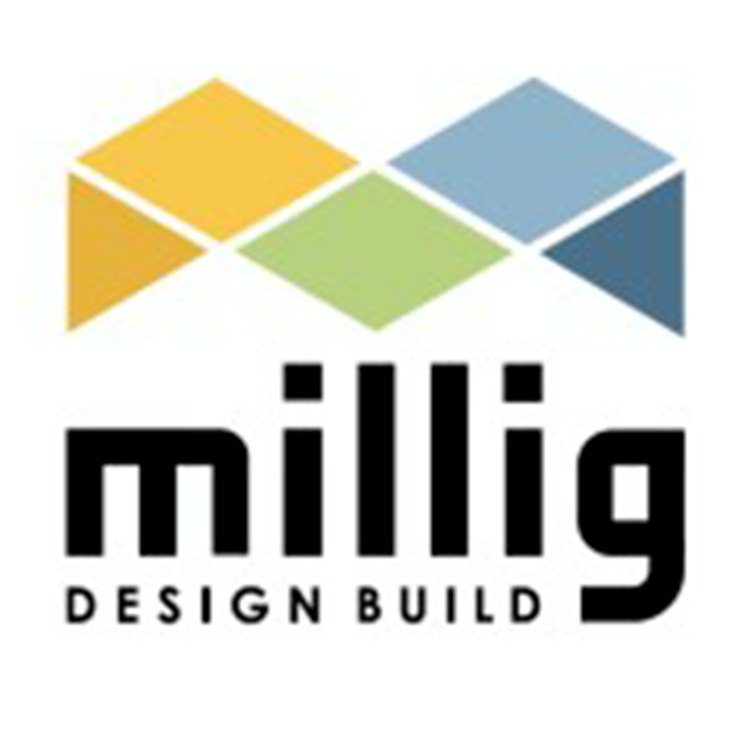
By Amy McVey
Exploring the Efficacy of Chilled Beam Technology in Modern HVAC Applications
Traditional HVAC systems typically over-cool air to dehumidify it and then reheat it to a comfortable temperature before it's distributed into the space — an energy-intensive process. Chilled beam systems, however, separate the tasks of cooling and dehumidifying.
The dehumidification process is predominantly managed by the Dedicated Outdoor Air System (DOAS), which conditions the outdoor air to a neutral state, typically around a 50% relative humidity. The resultant conditioned, dehumidified air is then circulated throughout the building.
The chilled beam system manages any additional cooling or heating needed (the sensible load) to maintain individual rooms or zones at their specific temperature preferences. Using water as a heat transfer medium, chilled beams demonstrate superior efficiency in this task due to water's higher heat capacity compared to air.
This division of labor—DOAS controlling the latent load (humidity) and chilled beams overseeing the sensible load (temperature)—enables precise control, enhancing occupant comfort and contributing to energy efficiency.
Types of Chilled Beam Technology Systems
Chilled beams, also known as induction diffusers, come in two primary types: active and passive.
Active Chilled Beams
Active Chilled Beams: Active chilled beams rely on air handlers to supply outdoor air for space conditioning and a cold water piping system that circulates water through integrated cooling coils. The primary airflow from the air handling unit (AHU) is introduced through small air jets, which induce three to five times the room's airflow amount through the beam's coil. This induction process offers local recirculation of room air, managing both ventilation and space conditioning (sensible cooling and heating loads).
Passive Chilled Beams
Passive chilled beams, unlike their active counterparts, operate simply on natural room convection and don't have a direct air supply. As room air transfers heat to the beam's coil, the air cools and descends into the occupied zone, simultaneously pulling warm room air down through the passive beam coils. Passive beams best serve applications with high heat loads and low ventilation air requirements.
Top Benefits of Chilled Beam Technology
Energy Savings: Depending on the application specifics, chilled beam systems can deliver energy savings ranging from 30 to 57%, contributing to lower operational costs and a greener environment.
Lower Power Consumption: Compared to conventional all-air systems, chilled beams use 33% less power to condition medium to large spaces and 20% less than Variable Refrigerant Flow (VRF) systems.
Enhanced Comfort: By operating at higher discharge air temperatures, chilled beams offer better air distribution and quieter operation, improving occupant comfort.
Reduced Refrigerant Use: Chilled beams use 66-75% less CFC/HFC refrigerant than VRF systems. The factory-sealed refrigerant is isolated from building occupants, offering a safer, eco-friendly solution.
Cost Savings: Compared to all-air and VRF systems, chilled beams can generate cost savings of 30% or more, making them a financially appealing choice for many buildings.
Challenges of Chilled Beam Technology
Higher First Cost: Active chilled beam systems can be more expensive to install compared to other alternatives due to their lower cooling capacity and need for a larger coil surface area for the needed space cooling. And, each beam in every room requires field-installed piping and control valves to supply chilled water, adding to the cost.
Condensation: Chilled beams, which do not usually have a condensate drainage system, must have their surface temperature maintained above the room's dew point. This is because the room's air, when passing over the cold coils, could cause moisture to condense and drip.
Risk of Water Leaks: Due to their water-based nature, chilled beams necessitate the field installation of piping (both supply and return) and control valves. This amplifies the risk of water leaks because of the additional piping and pipe connections.
Limited Heating Capacity: While active chilled beams can supply some heating by circulating hot water through the coils, their capacity is relatively limited. Moreover, distributing warm air at a velocity high enough to effectively heat the occupied space can be challenging.
The energy consumption of a specific building is subject to factors such as climate, building usage, and system design. Millig Design Build will conduct an analysis using whole-building energy simulation software to gauge your facility’s actual energy use. We then will present the advantages and challenges of implementing chilled beam technology at your facility in order to determine the best system for your unique needs.
DOAS supplies dehumidified, filtered, and conditioned outdoor air to the beam system
Chilled beams supply low-velocity conditioned air to individual rooms and zones
About Amy McVey
Amy is passionate about increasing the environmental quality of the built environment and lowering the impact buildings have on climate change. As the Director of Marketing, Amy works closely with Millig Design Build’s interdisciplinary team to elevate thought leadership around energy efficiency, building health and safety, indoor air quality, and decarbonization. Before helping start Millig Design Build, Amy worked in advertising as a creative director.
OUR SOLUTIONS
Heating, ventilation, and air conditioning
Smart meters and building controls
On-site solar and other renewable energy systems
LED lighting retrofits
Building envelope improvements
Water systems
CHP-Cogeneration
And more
CONTACT US










